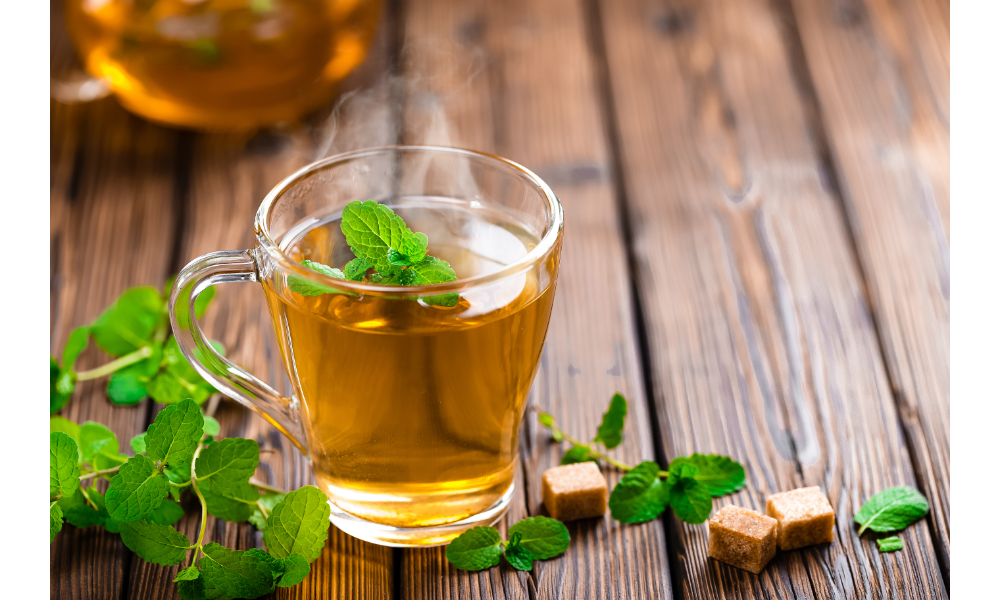Table of contents
What are the sympathies for weaning the baby

You are about to learn everything you need to know about the sympathies for weaning the baby and you will also be able to check how to perform some of them. Know that these sympathies correspond to very old knowledge.
Over the centuries, these practices have helped women and children to go through an often difficult moment: weaning, which corresponds to the moment when the baby stops feeding on breast milk. Now the baby is ready to consume other types of food and no longer needs the mother's breast.
However, this is a phase that can generate suffering for both mother and child. Therefore, this article brings more information and tips on sympathy for weaning the baby that will help make this process less complicated and traumatic. Check out three sympathies for weaning and relevant information below.
Three sympathies to perform the weaning of babies

When it comes to weaning, there are many factors involved in this process: emotional and physical aspects, issues of the child's own development and also its relationship with the world and the mother.
When babies are born, their brains are not yet fully formed and their cognitive development takes place over time. This process is very fast for children, so they have an easier time adapting and learning than adults, especially when they are in the early stages of life.
In this sense, it is important to understand what each stage of life will represent for the child. In the first moment, life is the mother's womb. The first traumatic rupture that happens is the moment of birth. The second, we can say, is the weaning phase. Understand why this is so:
This happens because in these first months of life, the baby still does not have a notion of "I". It is as if he does not understand that he and his mother are different people. The mother is an extension of the baby for him in this phase, especially when it comes to feeding. Thus, when the time comes to wean, there may be a lot of discomfort for the child, because it is a maladaptation.
It is important to be careful with this process, considering that it also generates changes and conflicts for the mother. Many women report how the experience of breastfeeding is unique and special in a person's life. Even many are attached to it and may feel the need for support at this time, because they may be reluctant to carry out the weaning process or feel very afraid and difficult.
Others, go through an unpleasant experience, especially when there is no proper preparation of the breast, which can generate a lot of pain and frustration. In these cases, the mother may want to start the weaning process abruptly, which can be very painful both for that mother and her baby.
For thousands of years practices related to this moment have been passed from generation to generation through women of different peoples and cultures to bring more comfort to mothers and children and help in this difficult process. These practices are called sympathies for weaning the baby.
Check out below, three of them that you can perform to make this step more harmonious and check out more relevant information about it.
Sympathy to wean the baby
Making a sympathy for weaning the baby is one of the oldest and most common practices in several regions of the planet. There are many symbolisms, feelings and affections involved in this phase so it is common to perform sympathy not only for luck and help in the weaning process, but also to ask for the health of the child, the mother and the happiness of both throughout life.
Now check out a well-known weaning sympathy to make this process easier for both mom and baby:
It should be done on the waning moon and in the following way: put some breast milk in a cup and then crush a clove of garlic. Mix a little flour with sugar and, together with the crushed garlic, put it in the cup of milk. Mix it and give it to the baby to drink behind the kitchen door. It is also worth saying a prayer asking for the health and happiness of the whole family.
Sympathy for baby catch the bottle
A good option is to do a sympathy for the baby to catch the bottle. Check out the following one of the most traditional to do:
Use a bottle with a nipple similar to the breast and put the breast milk in it. Then, put the baby to suckle at your breast. As soon as it takes 3 minutes, change the nipple from your breast to the nipple of the bottle. As soon as you make the change, say a prayer to the child's Guardian Angel. There are several prayers on the Internet, just choose the one that touches your heart the most.
Sympathy to dry breast milk
It is also important to try to dry the breast milk, thus avoiding the natural stimulation of the baby wanting the breast and also the accumulation of milk, which can become stoned and cause discomfort for the mother.
However, it is essential that you know that breast milk is the most important food for the beginning of the baby's life, therefore, weaning should only be done after the necessary period for the child to be nourished by this milk. Currently, the recommendation is to offer 06 months exclusively of breast milk and from this period on, introduce complementary feeding.
But, moving on, there are several practices that are considered as sympathy to make the milk dry faster, one of them is with castor bean cord. Although very old, some women still take the stem of the castor bean leaf and cut it into small rounds. Then, just pass a string through them making a cord, which should be used under the clothes, above the breasts.
Practices to help the sympathy to dry breast milk

Drying breast milk is crucial for the weaning phase. First, because the accumulation of milk generates a lot of discomfort for the mother. Second, because once the milk starts to dry and become thinner, the child itself will understand that this is no longer the food it is used to. Check out tips to help dry breast milk to assist in your sympathy for weaning the baby.
Cold cabbage leaves on the breasts
For this sympathy, put cabbage leaves in the refrigerator and, after cooled, place them on the breasts. They have properties that help dry breast milk and it is a tactic used for a long time. Do this procedure at least 3 times a week and preferably at night. In a few days you will notice the results.
Cold compresses on the breasts
Cold compresses on the breasts can also help dry breast milk. It is believed that they influence the skin, preventing its dilation and, therefore, the ejection and production of milk. Therefore, perform this procedure every day, so that gradually you can begin to feel the results.
Mint tea
Mint tea, besides being a tasty option, helps to make the breasts become dehydrated. In this way, it also encourages weaning, as it helps dry up the breast milk in a natural and painless way.
To do this, subtly apply the tea on the breasts using a brush or even your fingers. This procedure is very simple, easy and can be performed at least 02 times a week.
Care when weaning the baby

When doing a sympathy for baby weaning, it is very important that you are sure that this is the right time to do it.
This is because starting weaning before the time can generate damage to the baby's health, and may even harm its development. Check out the following relevant information about weaning.
Find out if now is the right time
To know if this is the right time, it is important that you have knowledge about the child development process. Read about it, talk to your pediatrician and be sure that it is the right time.
When the breasts become full and painful
If you are still producing a lot of milk, with full and sore breasts, know that it may take some time for a natural reduction in its production, even if you have already started the weaning process and reduced the number and duration of feeds.
To relieve discomfort, remove the milk and place it in a glass container in the refrigerator. It can still be offered to the child after 12 hours or 14 days in the freezer.
Bottle or cup
When weaning, be careful not to get the baby addicted to a breast substitute: the bottle. At first, it may seem like a good ally, but the cup is much more indicated.
This is because the bottle can harm the baby's health, in particular, affecting the proper formation and future positioning of the teeth. In addition, the cup helps to stimulate other nuances of the child's sensory-motor development.
Best milk to replace breast milk
There are milks made for the weaning phase that can be found in pharmacies and supermarkets. It is also worth remembering that some babies may have specific nutritional needs. Therefore, it is always valid the pediatrician's guidance as to the ideal milk to replace breast milk. Do not hesitate to ask for medical help in this phase.
Regular medical follow-up to check nutritional needs
Never miss pediatric consultations. They are very important for checking the baby's development and needs. In this way, it is easier and safer to carry out the weaning process with regular medical follow-up.
Tips for weaning the baby

Weaning your baby is a process. It is important that you understand this and be prepared to do things little by little, because it will not - and should not - happen overnight. Weaning occurs in a much healthier and harmonious way when it is planned and gradual.
Thus, in a natural way, the baby and the mother will adapt to the new reality. Check out some important tips that will help you go through this stage, as well as the realization of a sympathy for weaning the baby. You should even join the two things. Continue reading.
Plan a time to start, but start slowly
Plan this moment. If you are a first-time mother, it is important to study the baby's development and be up to date with pediatric consultations. Thus, you will know when it is recommended to start the process and you can plan better, choosing the best day for it. But remember: start little by little.
Reduce feedings
In the beginning, the baby basically needs to feed and sleep, so it is normal that he or she feeds several times a day and for a long time. When the time comes for weaning, you can start by reducing the number of feeds so that the baby also gets used to the physical distance from the mother's breast.
Decrease the length of feeds
After starting to reduce the number of feedings, it is interesting to reduce their duration. After all, the baby will already be starting to feed with other types of food besides breast milk. It is worth emphasizing that pediatric monitoring is essential throughout the process.
Ask someone else to feed the baby
There is a very strong bond between the baby and his/her mother when feeding. It is important at this stage that the baby understands and learns to feed himself/herself even when the mother is not present. A good help in this process is to ask other people to feed the baby. It can be the father or any other responsible adult and caregiver.
Do not offer the breast
This is a critical moment, when the mother should stop offering the breast. The baby will cry. Sometimes, it's not because he is hungry, but because he wants the breast.
Mothers need to be strong in this phase and resist the urge to interrupt the child's suffering by offering the breast. But it is important to be firm at this moment, otherwise it can harm the evolution of the weaning process.
Offer other foods
The baby is already going through a feeding adaptation process. In this phase, it is crucial to offer him other foods and let him be distracted and get to know another universe through feeding, other than his mother's breast.
Create an attractive atmosphere for the baby to feed and stimulate his contact with the appropriate foods, making feeding time more interesting. This way, when he cries because of the lack of breast, it will be easier for him to accept other foods.
Propolis in breasts
Using propolis as an aid in the weaning process is also an alternative. There are those who pass the product directly on the breasts and there are also those who take specific floral remedies or consume them orally.
Some pediatricians recommend this practice because it does not involve the mother rejecting the baby by not offering the breast. In this case, the baby will smell the propolis, which is very strong, and will not want to breastfeed. He may cry a little, but generally, this is a very effective method.
It is possible to see several reports on the internet from mothers who used this technique and had good results. It works especially when the child is over a year and is more accustomed to other foods.
Can baby weaning sympathies be bad?

When deciding to perform a sympathy for weaning the baby, it is important to research a lot and seek support, even with the help of women and more experienced people.
But it can be said that the sympathies for weaning the baby are not bad. They are intended to help both mother and child to go through this difficult process that is weaning. However, you need to know the right time to do this and what is the most appropriate way, as mentioned above.
If you have any questions, review this article and talk to your doctor. However, performing a sympathy for weaning baby will certainly help you go through this time with more security, affection and tranquility. And it will be even more rewarding to see your baby grow and develop.

